5 Ways to Create Memorable Online Brand Experiences - Part 4
Focus on Search
Over the past several years, the rise of specific UI patterns in professional services web design has resulted in a landscape where many sites now look and work in similar ways as each other because users have come to expect certain features and functionality structures to be in place. And since the main goal of any website should be getting the viewer to the content they’re seeking as quickly as possible, there are now some parameters of web design that, while they may be overused, have become essential in a way. Visitors don’t have the patience to figure out how to interact with a site once they get there. If you try to do anything too out-of-the-box or uncommon, you run the risk of creating a frustrating UX because users expect certain content conventions to be in place. So given that reality, what can law firms do to still create memorable website experiences, and how can they do that without sacrificing the expected user experience along the way?
In Part 1 of this five-part series, we explored how firms could use message-driven visuals and a renewed focus on brand positioning to create a more effective and impactful website. Part 2 focused on how firms can utilize videos and micro-animations to stand out in a crowded market. Part 3 was a discussion around content personalization and how artificial intelligence has worked its way into the law firm website sphere. In Part 4, we talk about the importance and value of the technology behind your website’s internal site search tool, and how that search tool can be a driving factor in a visitor’s positive or negative experience with your website.
Tactic 4: The Importance of Your Site’s Internal Search Tool
When new visitors first come to your site, if they aren’t already clicking through to a specific article or coming to view a specific attorney’s biography, they may likely use your site’s internal search tool to quickly track down the particular experience or information they’re looking for, rather than navigate their way through your practice and/or industry listings. So it’s critical that firms invest in search platforms that effectively and thoroughly index your site’s content and then provide results that are relevant and meet the user’s needs.
We’ve actually seen more firms who are actually leading with their search feature in a prominent manner, using it in their primary messaging space. There are different ways to approach this. Blank Rome is obviously very direct and matter-of-fact about it: no additional messaging, no substantive content in that initial view – just the logo, navigation, large-scale city image and that search box. Additional content all falls well below the initial fold. They’re counting on the fact that their viewers want to use a search tool to jump directly to specific information (presumably supported by their own visitor tracking analysis):
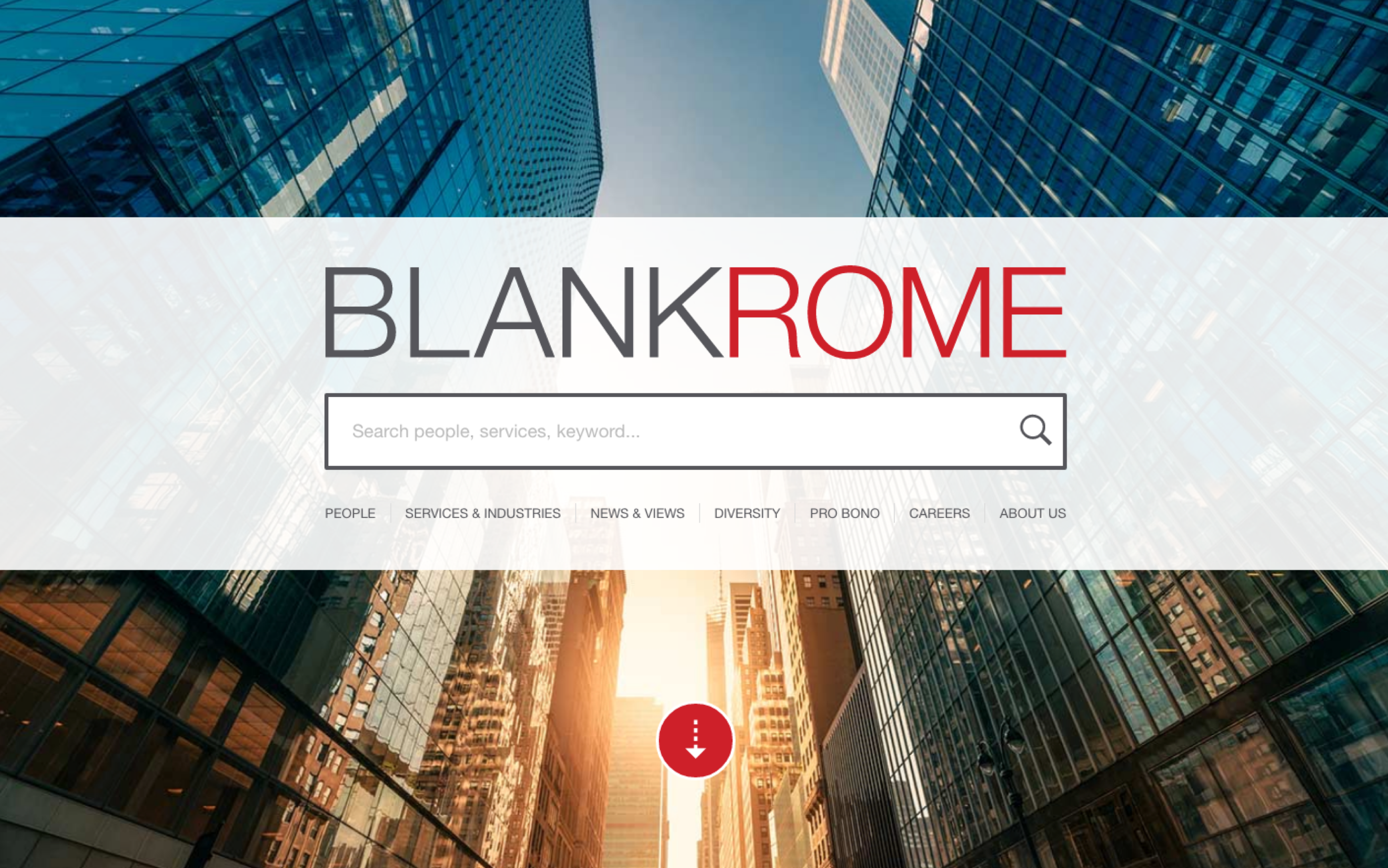
Simpson Thacher takes a much softer, friendlier and more inviting approach, showing imagery of their people along with a more conversational, “How can we help you?” prompt.

Milbank takes yet another approach. They use their homepage message area to highlight a client case study, but then, as their default view, they expand the search feature so it’s immediately accessible to the viewer. The viewer can then close that menu if they want, but for the initial engagement with the site, that search prompt is right there and easily accessible.
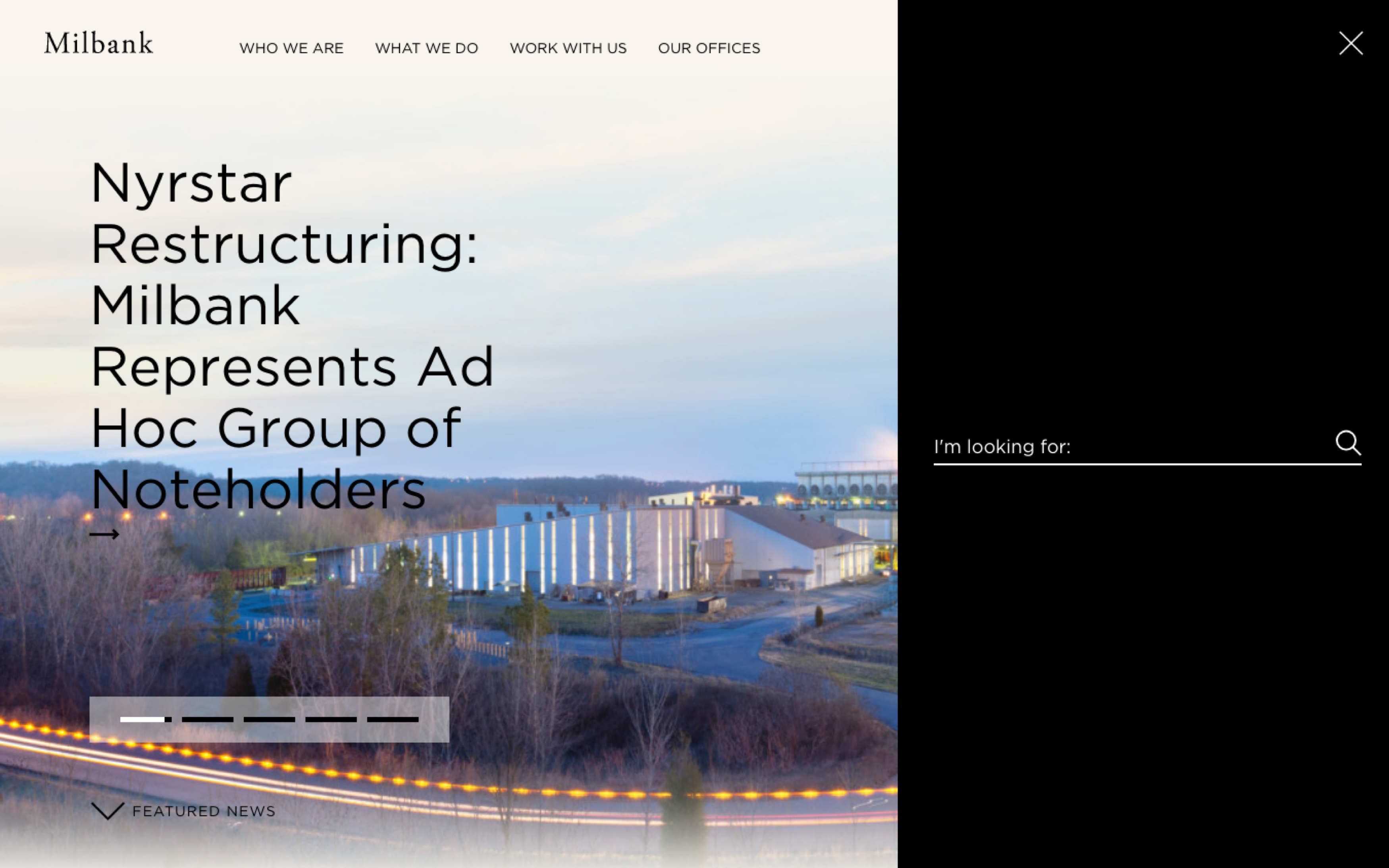
When it comes to the actual functionality of the internal site search tool, there are things firms can do to tailor that experience as well. At a minimum, firms can take a cue from Google and incorporate predictive search into their sites.
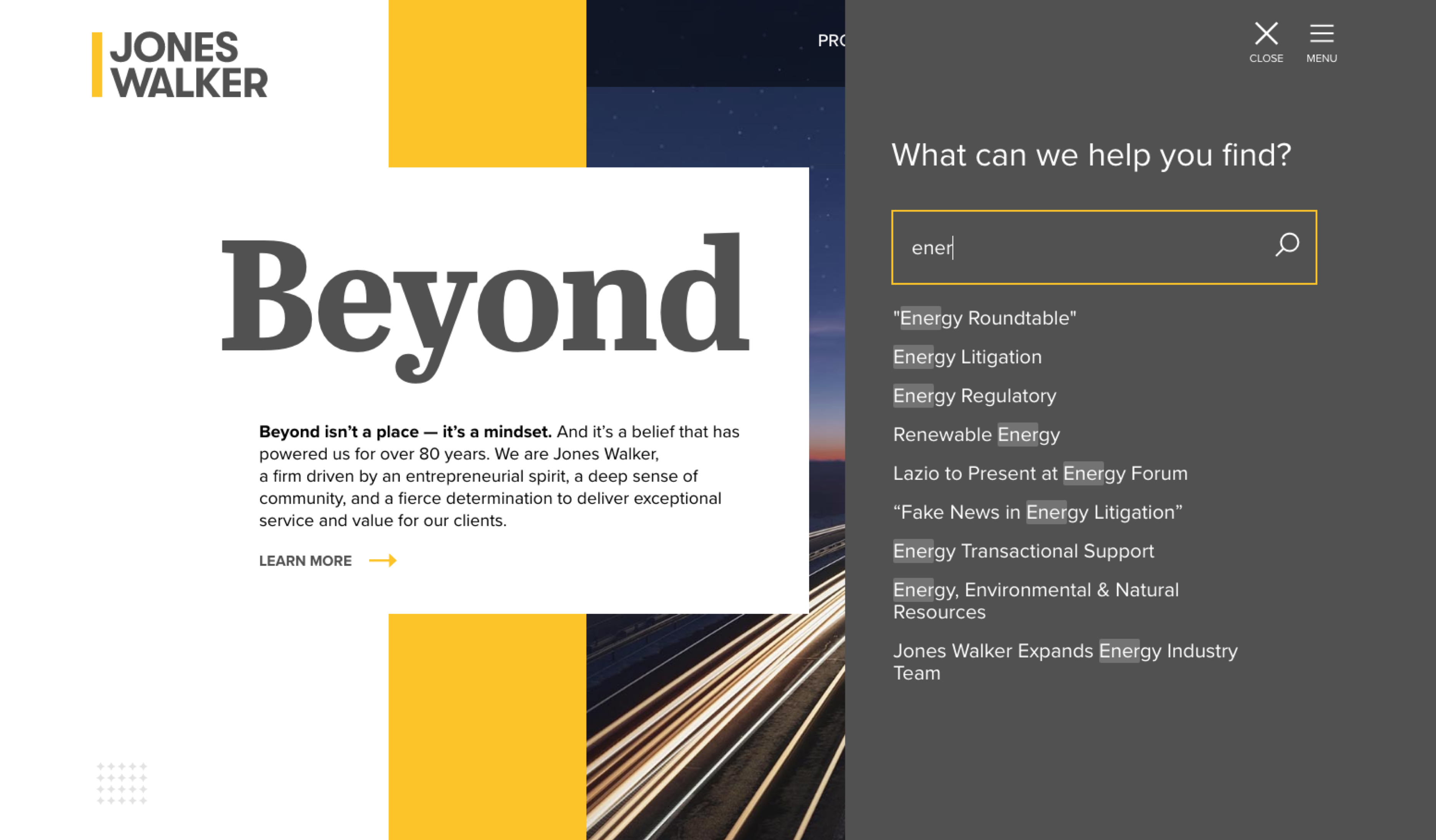
Along those same lines, firms should also be sure their search technology includes more advanced features such as the ability to recognize synonyms and misspellings as well. The goal is for the technology to be capable of figuring out the user’s intent and providing results that will ultimately get them to that desired information as quickly as possible.
Another tactic to consider is incorporating more robust filtering options within the search tool, which can allow users to help narrow the focus of the search on their own. Shearman provides a good example of this on their website:
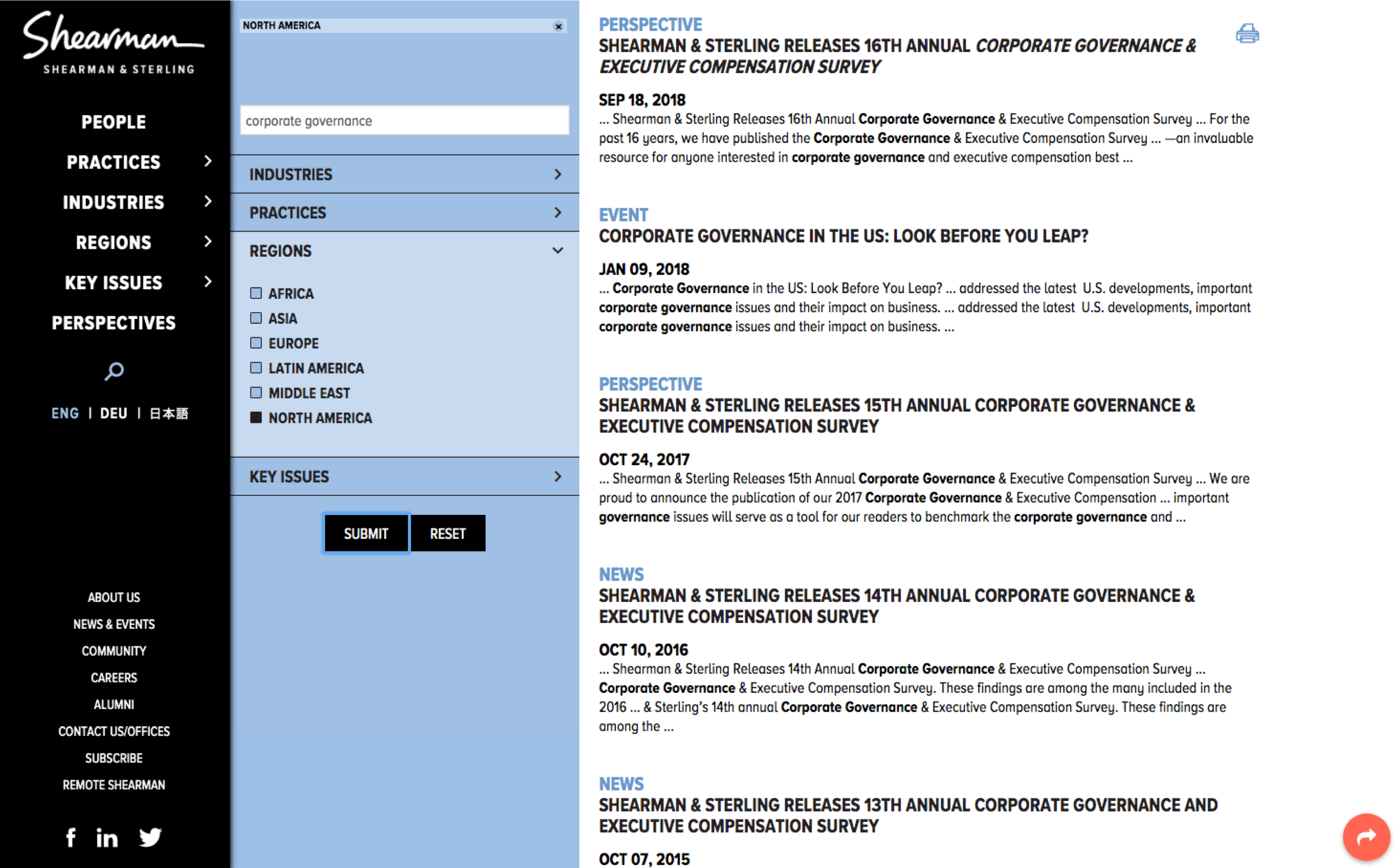
And lastly, don’t lose sight of the way your search results are actually presented to the viewer. This factors into the user’s experience with your website as well, and is a step that isn’t often given the same care and attention as the other design templates in a new website, like the attorney bio pages or practice detail pages. Make sure your search results are categorized, streamlined and easy to follow, like White & Case does on their website. It doesn’t do much good if your search tool provides the appropriate content links, but does so in a way that isn’t easy for the viewer to quickly scan and determine where to click to next.
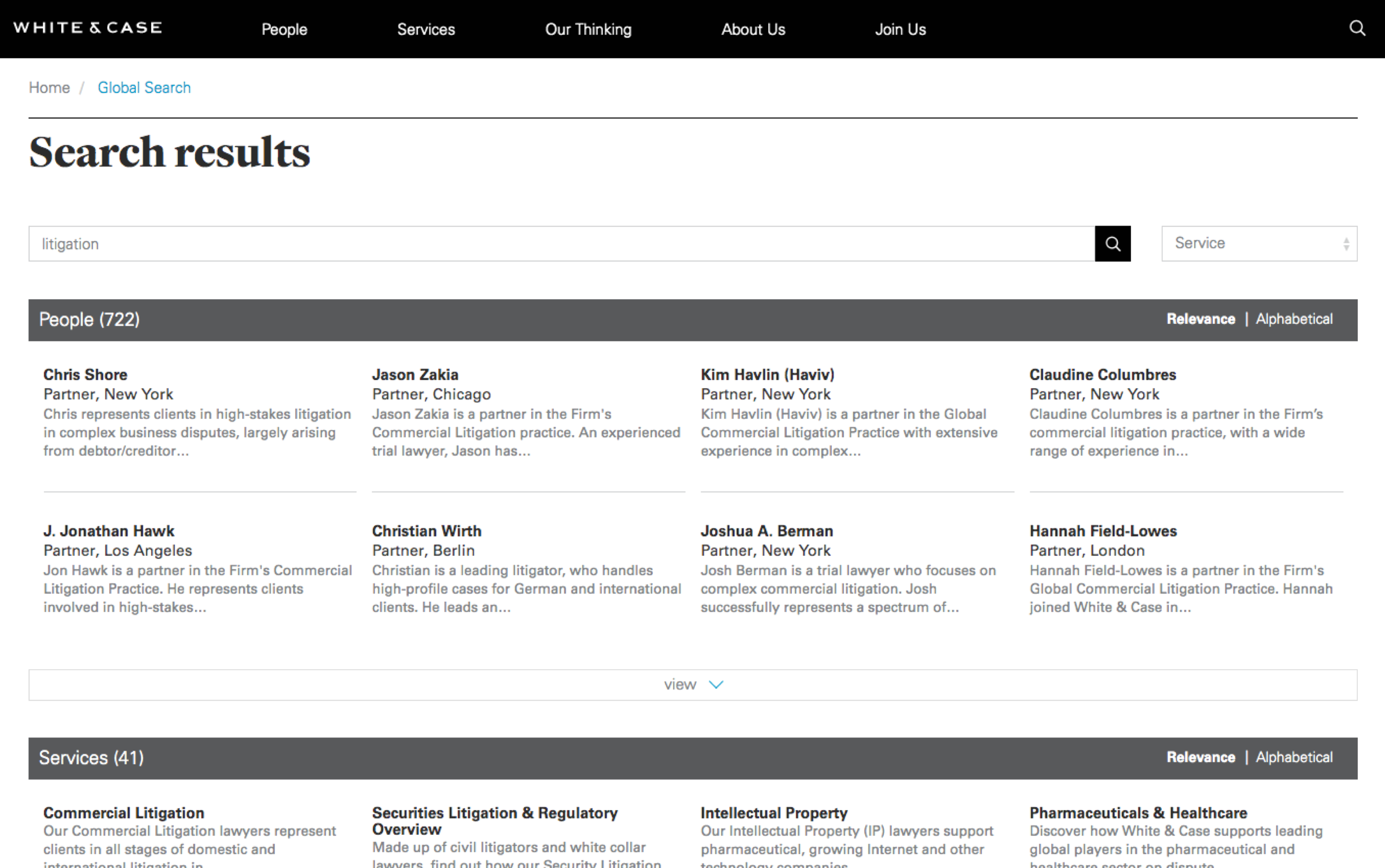
Looking ahead to what could be coming down the pike, AI and machine learning are also impacting the way buyers of legal services may expect to search for information in the future. As audiences become comfortable with natural language platforms like Siri and Alexa for common tasks, they may eventually expect to have the same “discussion” with online search engines and websites as well. Audiences are being trained to “speak naturally” to computers and mobile devices in their everyday interactions. It may not be long before these tools will be used to search for and work with professional services firms. Contextual searching, natural language processing and adaptive search algorithms will be another powerful technique to provide visitors with relevant content and engagement options. This type of advanced search is coming and law firms should be prepared to adapt to this emerging opportunity.
Check back soon for final part of our five-part series, where we’ll discuss the value of values-driven branding for law firms.
Are you ready to distinguish your firm’s website? Contact Herrmann’s Chief Business Development Officer, John Albert, at john@herrmann.com to set up a free consultation today.


